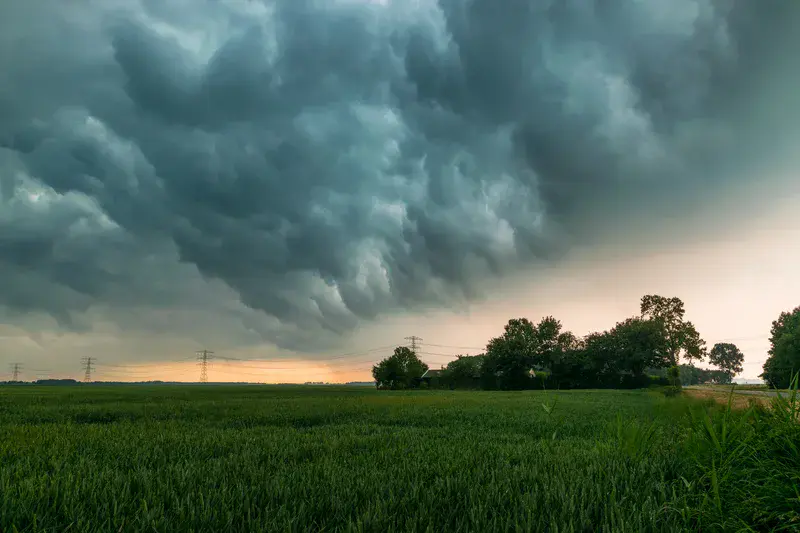
Inside the Whale's Mouth
When a thunderstorm develops an expansive outflow boundary racing outward in front of it, a region opens up between the leading gust front and the intense precipitation in the core. After the passage of a sometimes impressive shelf cloud, this region offers a unique perspective to watch the storm structure from within. Especially the backside of the shelf cloud is often very turbulent as it consists of the inflow base of intense convective clouds overhead. Such a feature is often referred to as a whale's mouth, giving the observer the impression of being eaten by a huge whale before the storm hits. In this particular case, conditions ahead of the storm were very hazy obscuring the front of the storm entirely. Only after the passage of the gust front and associated clouds, the skies would open up and reveal this structure: an amazing experience.
Featured on GeoLog, the official blog of the European Geosciences Union
Category
Location
- Europe (3893)
- Western Europe (788)
- Netherlands (43)
- Exact location (6.9170 E, 53.2090 N)
Tags
- thunderstorm (17)
- clouds (142)
- whale's mouth (1)
- gust front (1)
- cumulonimbus (2)
- shelf cloud (1)
- arcus (1)
Colours
Image properties
3240 × 2160 px;
image/jpeg; 4.1 MB
Camera:
Nikon D5300
Software: Lightroom
Taken on 1
June
2018
Submitted on 15 February 2019
Licence
Creative Commons Attribution-NoDerivs 3.0 Unported (CC BY-ND 3.0)
Credit
Michiel Baatsen (distributed via imaggeo.egu.eu)
Share
Appreciate
Report